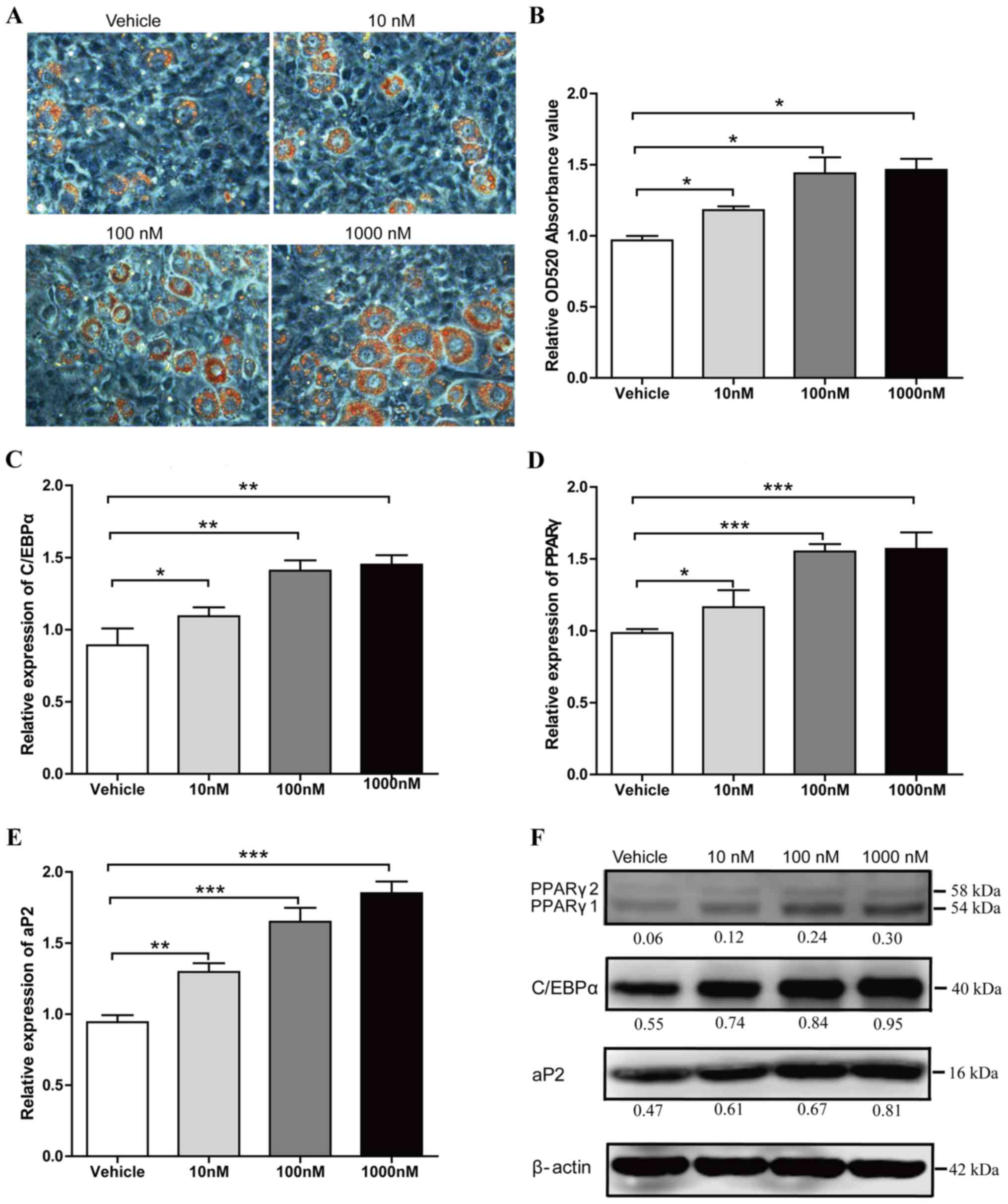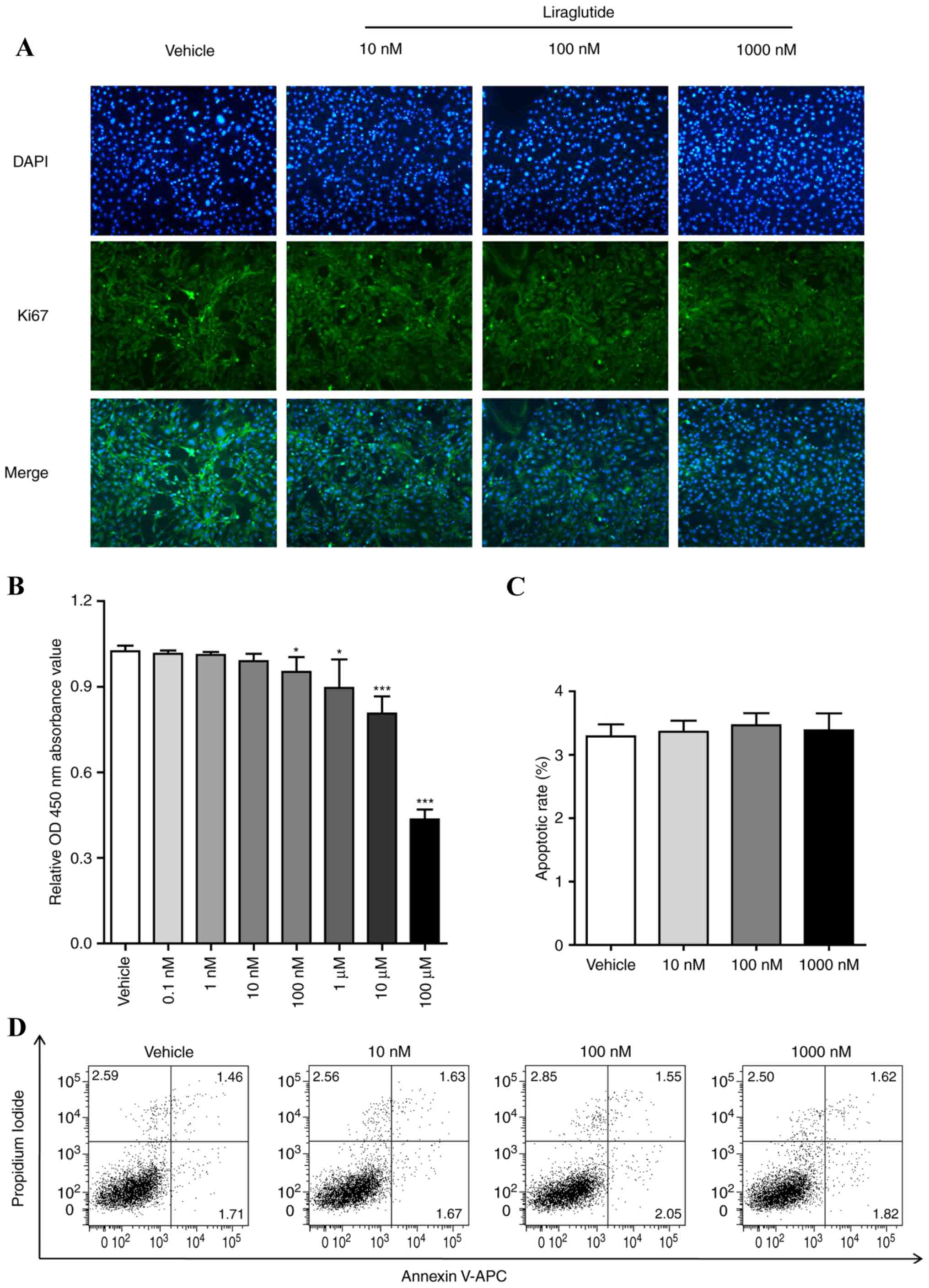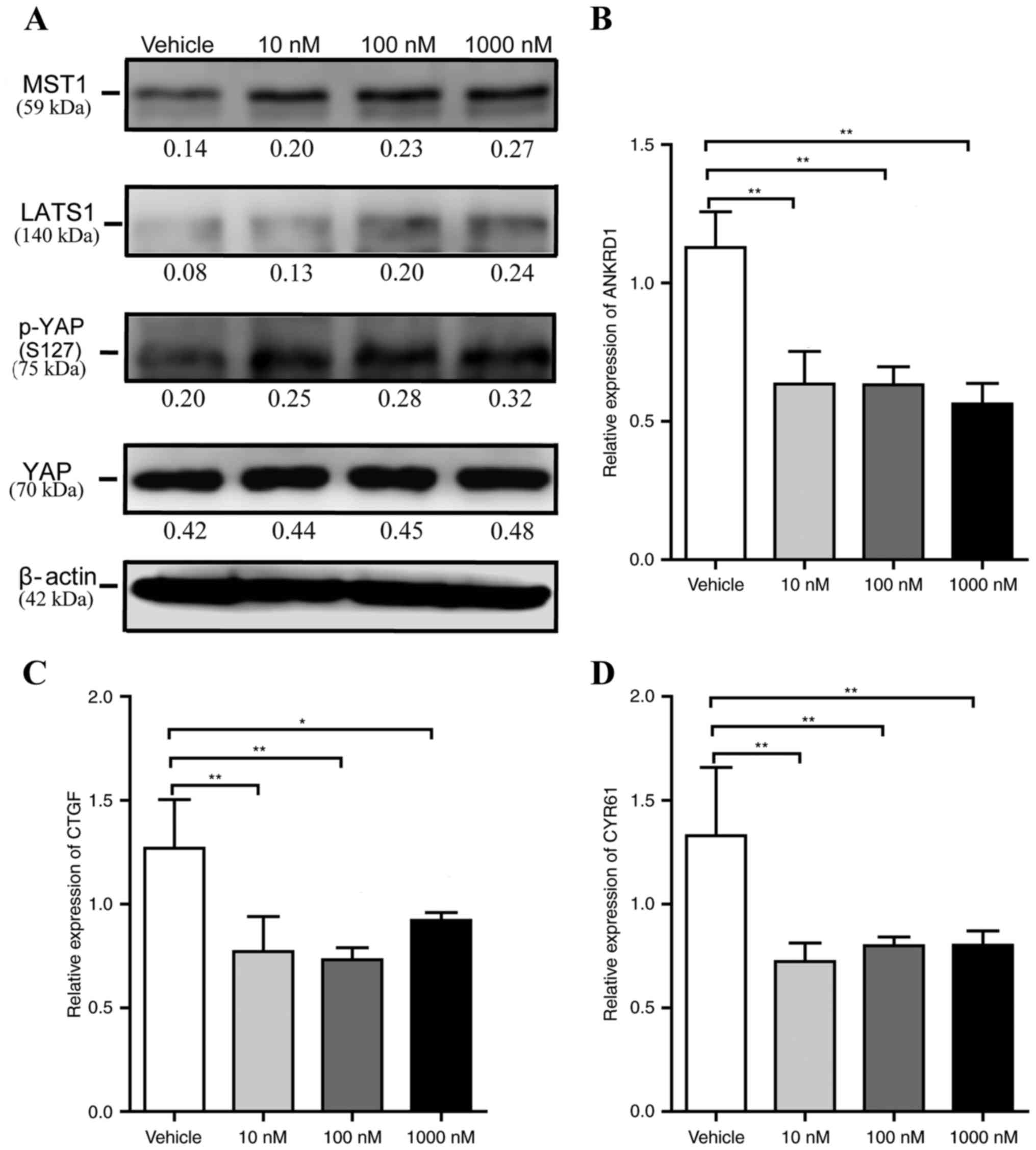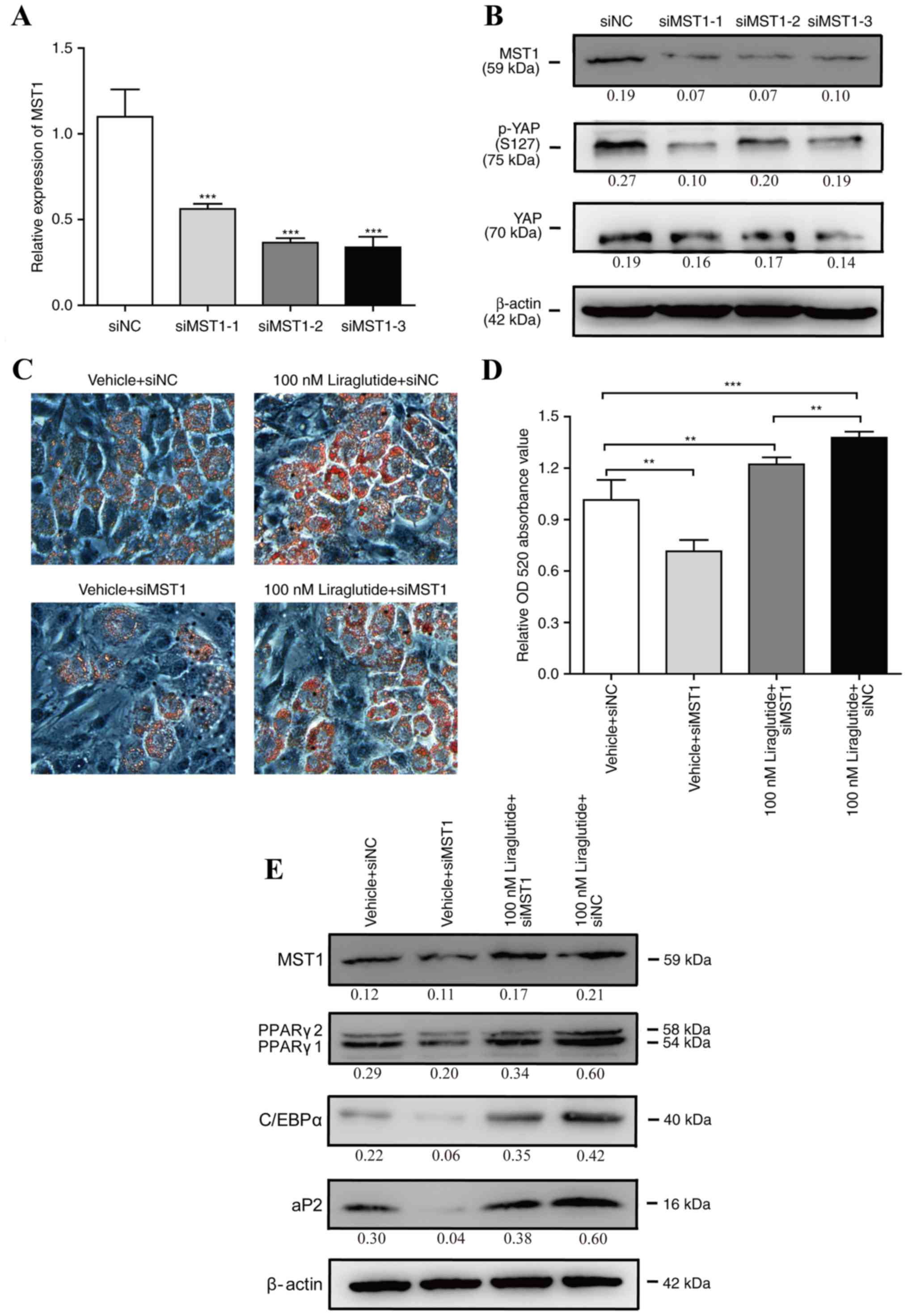Liraglutide suppresses proliferation and induces adipogenic differentiation of 3T3-L1 cells via the Hippo-YAP signaling pathway
- Authors:
- Published online on: January 16, 2018 https://doi.org/10.3892/mmr.2018.8438
- Pages: 4499-4507
-
Copyright: © Li et al. This is an open access article distributed under the terms of Creative Commons Attribution License [CC BY_NC 4.0].
Metrics: Total
Views: 0 (Spandidos Publications: | PMC Statistics: )
Total PDF Downloads: 0 (Spandidos Publications: | PMC Statistics: )
Abstract
Liraglutide, as a glucagon-like peptide‑1 analogue, is used to treat type 2 diabetes mellitus and obesity. Previous findings have demonstrated the effects of liraglutide on adipogenesis; however, the underlying mechanism involved in this process remains to be elucidated. In the present study, to certify the effect of liraglutide on adipogenesis and explore the possible underlying mechanism involved in this process, preadipocyte 3T3‑L1 cells were cultured in adipocyte‑inducing medium and treated with liraglutide. Subsequently, the expression levels of the master transcription factors and adipocyte‑specific genes were measured by reverse transcription‑quantitative polymerase chain reaction and immunoblotting analysis. Lipid droplet production was detected by Oil red O staining. Cell proliferation was determined by a Cell Counting Kit-8 assay and cell immunofluorescence for Ki67, and apoptosis was assessed by flow cytometry. Next, the expression levels of the core components in the Hippo‑yes‑associated protein (YAP) signaling pathway as well as YAP‑specific target genes were measured. Finally, short interfering RNAs of mammalian ste20 kinase 1/2 (MST1/2), a key protein kinase in the Hippo‑YAP pathway, were used to determine whether liraglutide regulated adipogenic differentiation via the Hippo‑YAP pathway. It was demonstrated that liraglutide promoted adipogenic differentiation, suppressed proliferation, did not affect apoptosis of 3T3‑L1 cells and activated the Hippo‑YAP signaling pathway at the initial stage of adipogenesis. Silencing of MST1 counteracted the effect of increasing adipogenesis by liraglutide. These results suggested that liraglutide may activate the Hippo‑YAP signaling pathway leading to the inhibition of proliferation of preadipocyte 3T3‑L1 cells, and result in cells achieving transformation into mature adipocytes sooner. Taken together, the results of the present study may expand knowledge of the underlying mechanism of liraglutide facilitating adipogenesis, and may contribute to the development of GLP‑1 receptor agonists for weight loss and increased insulin sensitivity.













